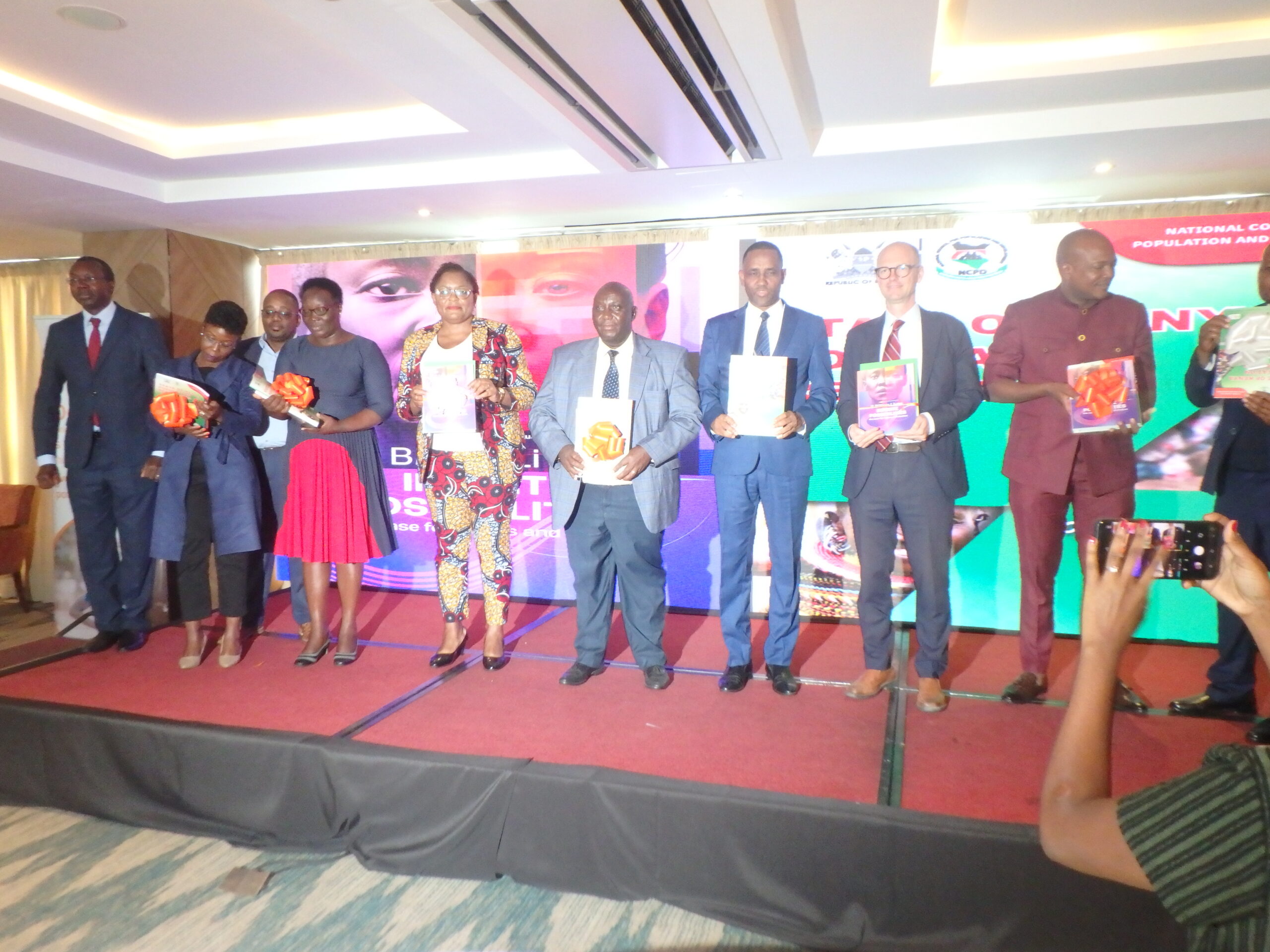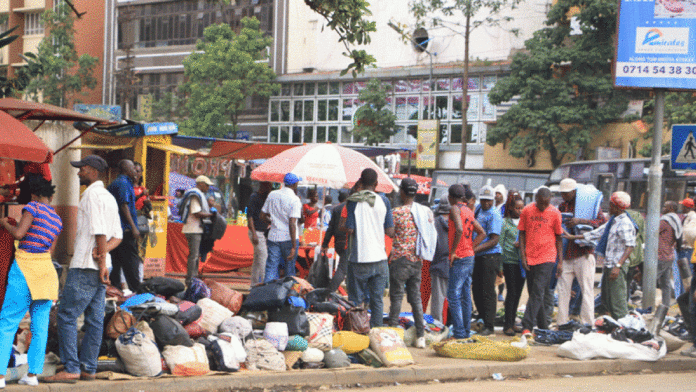|
Getting your Trinity Audio player ready...
|
By Henry Owino
Nairobi, Kenya: Kenya’s population among the youth is steadily increasing faster compared to other age brackets such as the young and elderly in the country. This rapid increase in the youth population is significant for economic and social opportunities for any country in the world.
Nevertheless, the youth bulge comes with enormous challenges that are causing anxiety among government agencies in terms of governance management and planning for developments. The major areas of concern include the availability of opportunities and challenges involved in various sectors such as; health, education, skills training, labour market needs, employment vacancies, and digital addiction.
Currently, Kenya is experiencing a youth bulge with 29 percent of the population aged 18-34. The large number of Kenyan youths presents an opportunity for the country. It offers the potential to be a force for a positive economic future if they are gainfully engaged in economic and social activities for national development.
The youth are increasing at high rates yet there are insufficient job opportunities for offer. Most of the youth are in the age brackets between 19 and 24. This has led to many youths migrating from rural to urban amid a decline in fertility rates.
Rapid youth bulge, high migration rates, decline in fertility, and unemployment are among the causes of anxiety in the current population situation. Despite Kenya’s fertility rate going down, its population is projected to hit 70 million by 2050.
This is according to a report by the National Council for Population and Development (NCPD) 2023, released in late October. The report is titled; State of Kenya Population Report 2023, and with sub-title; Population Anxiety in Kenya. The working theme; is “Quality Population for Prosperous Kenya”.
According to Dr Mohamed Sheikh, Director General NCPD, the report focuses on anxieties around major population concerns: Declining fertility and its implication on the future population size; Youth bulge and its implications on the country’s future development prospects; Rapid increase in the number of persons living beyond 60 years of age; Profile of select diseases and causes of deaths; Persistence of Gender-based violence and its consequences; Migration in the context of Kenya’s urbanization process; and Implications of climate change on the country’s effort to achieve sustainable development.
“Our role as the NCPD is to carry out the research across the board for all the sectors. It is then upon the various sectors involved to pick it from there and deploy, strategize, and implement for ease of planning and management,” Dr Sheikh clarified.

Dr Sheikh further explained that the realization of the demographic dividend in Kenya depends on the ability of the economy to employ the youth and turn the youth bulge into a blessing. “For example, the State Department for Housing and Urban Development in Kenya can use the report to serve as its focal point in overseeing the advancement of development in their initiatives,” he added.
Dr Sheikh explained that youth bulge is usually a common phenomenon in many developing countries. It is a stage in development achieved when countries experience a reduction in infant mortality and fertility levels resulting in a large share of the population being young people. When more young people enter the working age, the country’s dependency ratio declines.
The report reveals that in each of the forty-seven (47) counties in Kenya, the youth population is more than 20 percent. Nairobi County has the highest proportion at 41 percent followed by Mombasa County at 37 percent.
Counties with the lowest proportion of youth in the total population are Vihiga at 23 percent followed by Muranga, Nyandarua, Kitui, and Mandera counties at 24 percent each.
Between 2009 and 2019, the youth population in Kenya increased from 11,089,518 to 13,177,600. Over the same period, the proportion of youth to the total population increased slightly from 28.7 to 29 percent (KNBS, 2009 and 2019).
According to the Kenya National Bureau of Statistics (KNBS) 2022, projection, in the coming years, the youth population in the country to increase to 16,915,230 in 2025, 18,036,281 in 2030, and 18,966,737 in 2035.
Current and projected youth population in millions (2009-2035) 11.1 2009 2019 2025 2030 2035 13.2 16.9 18.0 19.0 Source: Kenya Population and Housing Census Analytical Report, 2022
The fertility decline notwithstanding, Kenya’s population has continued to grow from 10.9 million in 1969 to 47.6 million in 2019. Kenya’s population is expected to keep growing and is projected to reach 70 million in 2050. It is worth noting that there are variations in the annual population growth rates among counties.
According to the 2019 Kenya Population and Housing Census (KPHC), six counties had an annual growth rate of less than 1 percent each between 2009 and 2019. Despite the low population growth rate, the number of people in these six (6) counties increased between 2009 and 2019.
These counties were; Mandera, Bomet, Vihiga, Nyandarua, Tharakanithi, Turkana, and Nyeri. Over the same period, eleven (11) counties had an annual population growth rate above 3 percent each. These were; Garissa, Kiambu, Murang’a, Narok, Samburu, Nairobi, Lamu, Kericho, Marsabit, Kajiado and Isiolo.
In addition, the decline in population growth and fertility rates in the country should not be a course of anxiety since the population has continued to increase due to population momentum.
Kenya’s population of older persons increased by about 41 percent from 1,943,715 in 2009 to 2,740,040 in 2019. Older persons are, therefore, the fastest-growing population segment in the country.
Sessional Paper No. 3 on Population Policy for National Development guides Kenya’s population agenda. This policy, anchored in the Constitution of Kenya 2010, among other legal frameworks, targets achieving a fertility of 2.1 children per woman by 2030.
Despite the robust advocacy and public engagement programmes that have been put in place, religious pronatalists impose scriptural commandments to “be fruitful and multiply,” and society stigmatizes childfree and childless couples.
In addition, there are a lot of myths and misconceptions about contraception and family planning services. At the same time, political pronatalists pressure is related to wanting more voters, and more often than not, give alarmists proclamations that the Kenyan population is diminishing.
In conclusion, the debate on fertility decline and population size must be alive to the contemporary issues and sustainability of the planet. Governments all over the world are struggling with one population issue or another.
The developed world is concerned with aging and workforce replacement, whereas the developing world is concerned with youth bulge and unemployment. Therefore, the anxiety of these two worlds varies and policies and programs must be alive to their concerns.
Beyond fertility decline, the population is equally affected by mortality and migration and therefore anxiety about population size purely on fertility decline is unbalanced.














